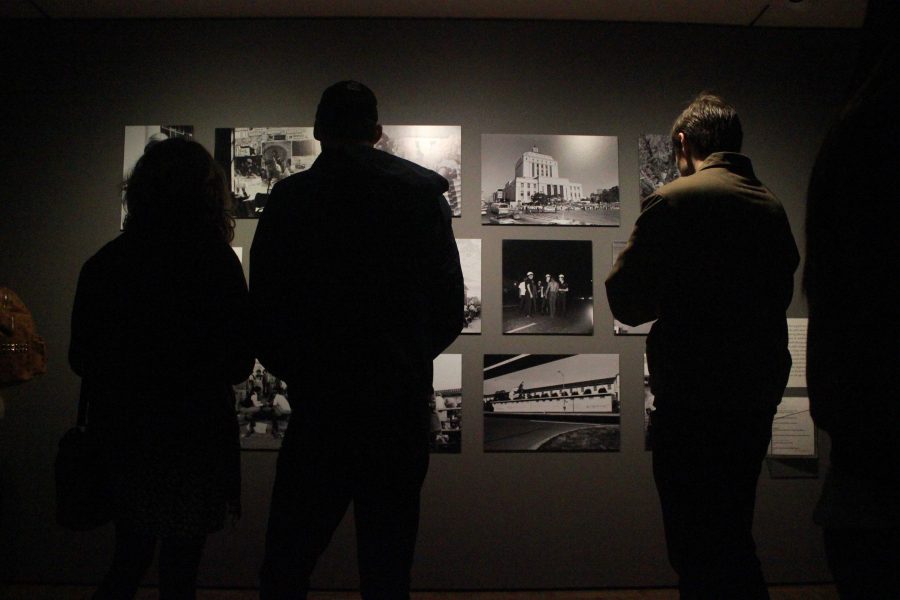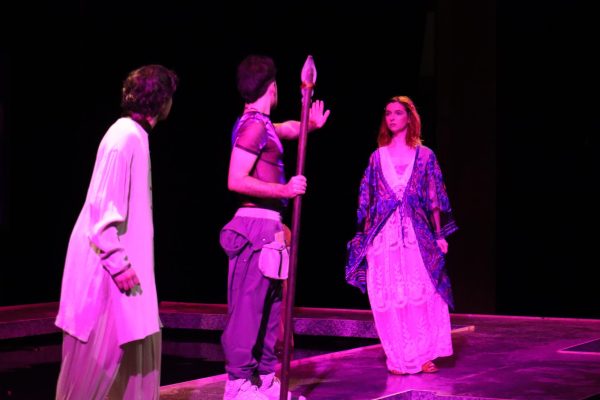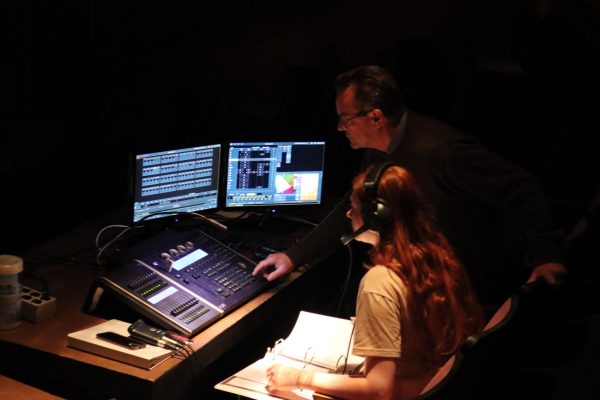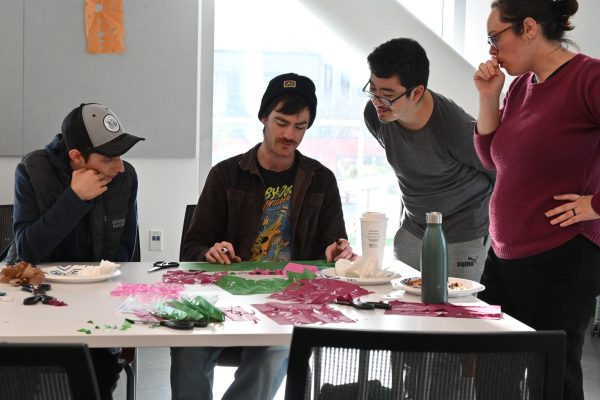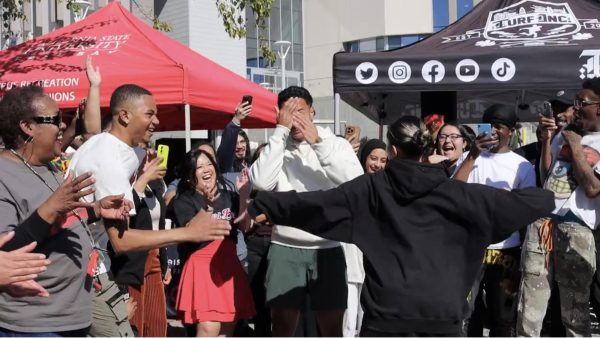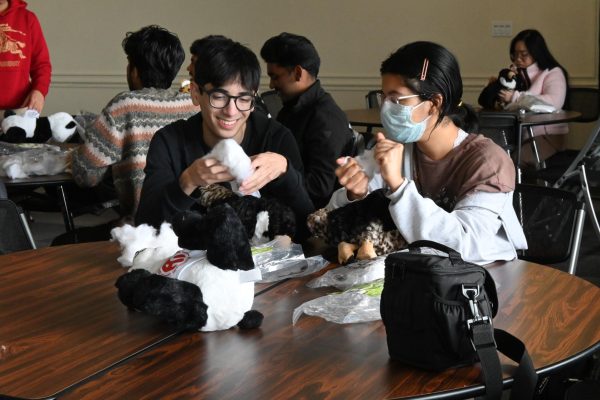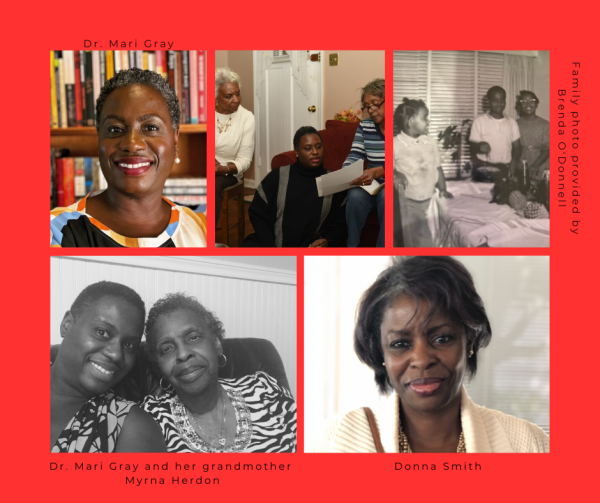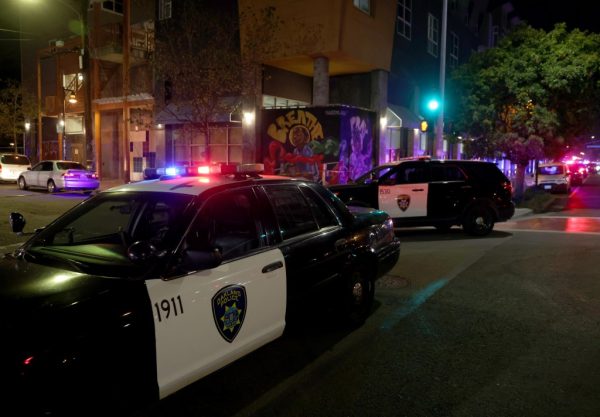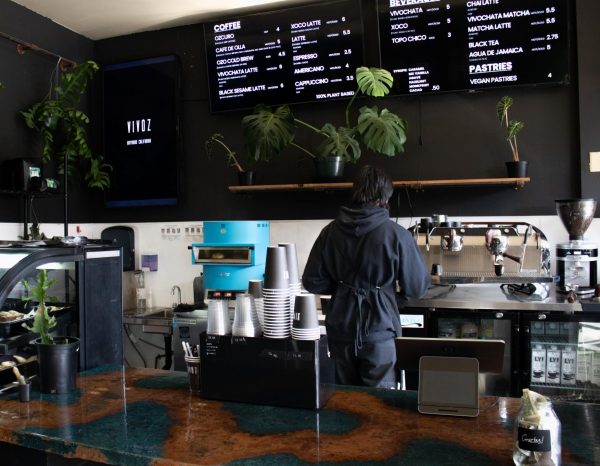Exhibit celebrates 50 years of the Black Panthers
Visitors of different ethnicities and ages filed into the gallery space on a recent Friday, some visiting for the first time, and some returning for another glimpse of the popular Black Panther exhibition at the Oakland Museum of California.
Dim lighting and colors of black, red and blue immediately surrounded the space. Centered in the middle of the entrance sits a replica of a peacock wicker chair that was pictured in an iconic portrait of Huey Newton, one of the founders of the Black Panther Party that hangs on the wall in the exhibit. In big bold text across a large black wall is the Ten Point Outline, the party’s guiding principles and goals that adds context to the entire exhibition. Crowds gathered around a video presentation to listen to former members and others speak on their experiences and the party’s accomplishments as well as regrets.
The “All Power to the People: Black Panthers at 50” exhibition opened in October and was extended through Feb. 26 due to popular demand, according to museum officials. The exhibit explores the Black Panther Party’s complex history through a contemporary showcase of art, photographs, artifacts and first-person accounts from former Panther members, scholars and community members. The exhibit took around three years from start to finish, with the help of 100 Black Panther members, according to a museum gallery guide.
A serious vibe filled the air as visitors made their way through the multidimensional exhibit. Each room shows a different aspect of the party’s history. The exhibit includes a mixture of items that provide insight into the party’s beliefs, motives and struggles — photographs, text, audio and artifacts, including a recovered rifle from the Sacramento chapter and jail cell bars from a decommissioned Oakland jail that used to hold former Panther members.
Starting as a small organization in Oakland in 1966 founded by Bobby Seale and Huey P. Newton, the Black Panther Party for Self-Defense was a radical political party formed to protect citizens from police brutality and provide services for their struggling communities. Both men and women served as leaders of different rank. After the assassination of Martin Luther King Jr., by 1968, the party had grown with chapters all over the country. By 1970 there were 40 national chapters and branches all over the world including France, Germany, England and more, according to gallery placards.
The Black Panther Party made efforts to provide African Americans with their basic needs and created several programs including free health clinics, free breakfast for children program, free ambulance program and Oakland community school, among many more. Some of these programs are still operating today.
“The presence of movements such as Black Lives Matter and the ongoing political protests highlight that, while the Panthers were revolutionary and ahead of their time, the problems with our community, state and nation’s concept of equality and justice, as highlighted by the actions and principles of the Panthers, persist,” said Eileen Hansen, Center for Experience Development and Collections program manager.
The “All Power to the People” exhibit invites visitors to reflect and expand their understanding of the rich history of the Black Panther Party.


